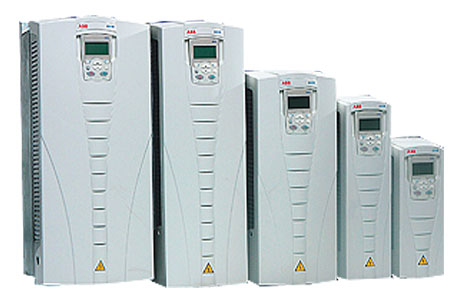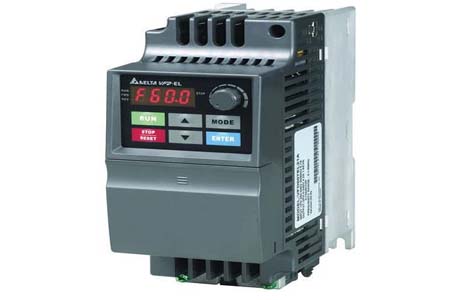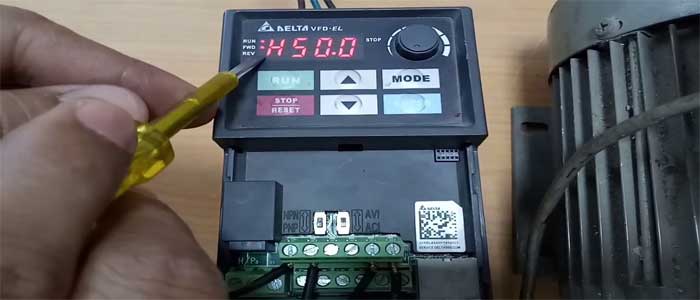VFD in HVAC
In the ever-evolving world of Heating, Ventilation, and Air Conditioning (HVAC), Variable Frequency Drives (VFDs) have emerged as a game-changing technology. They are fundamental to the function and efficiency of HVAC systems. Providing the ability to control the speed and torque of an HVAC system’s motor, AC Drives adjust these parameters to match the heating or cooling demand accurately.
This intelligent regulation leads to significant energy savings and increased comfort for occupants. By adjusting the motor speed to match the system requirements, VFDs also contribute to the longevity of the HVAC equipment, reducing wear and tear, thus minimizing the need for maintenance and repairs. This introduction to VFDs in HVAC systems is your first step toward understanding their importance and how they work.
What is a VFD in HVAC?
A Variable Frequency Drive in HVAC is a controller that drives electric motors by varying their frequency and voltage.
Basic Definition
A Variable Frequency Drive (VFD) in HVAC refers to an electronic device that controls the speed and torque of an electric motor in heating, ventilation, and air conditioning (HVAC) systems. It is also known as a variable speed drive (VSD) or an adjustable frequency drive (AFD). The VFD converts the fixed frequency and voltage of the power supply into a variable frequency and voltage output, allowing for precise control of motor speed.
Working Principle of VFDs in HVAC
The working principle of VFDs in HVAC involves three main components: rectifier, DC bus, and inverter.
Rectifier: The rectifier is the first stage of the VFD and converts the incoming AC power from the utility into DC power. It uses diodes to rectify the AC power, resulting in a pulsating DC voltage.
DC Bus: The DC bus acts as an intermediate storage for the rectified DC voltage. It consists of capacitors that smooth out the pulsations, providing a relatively constant DC voltage supply.
Inverter: The inverter is the final stage of the VFD and converts the DC voltage from the DC bus back into AC voltage with adjustable frequency and voltage. The inverter uses insulated-gate bipolar transistors (IGBTs) or other semiconductor devices to generate the desired variable frequency output.
The VFD controls the speed of the motor by adjusting the frequency and voltage output from the inverter. By changing the frequency and voltage, the VFD can vary the motor’s rotational speed. The VFD continuously monitors the load requirements of the HVAC system and adjusts the motor speed accordingly. This allows the motor to operate at the optimal speed required to meet the specific heating or cooling demand of the space.
The VFD also provides additional control features, such as acceleration and deceleration ramps, torque control, and braking capabilities. These features allow for smoother motor startups, precise control of motor speed, and energy-efficient operation by matching the motor speed to the load requirements.
The VFD’s working principle in HVAC revolves around its ability to control the frequency of the electrical power supplied to a motor. It first converts the incoming electricity into DC. Then, using advanced electronics, it creates a waveform that can alter the motor speed and torque. This flexibility allows the HVAC system to adapt to varying heating and cooling demands throughout the day, leading to energy savings and increased comfort.
The Importance of AHU VFD Analysis
What it Is
An Air Handling Unit (AHU) VFD analysis is a detailed evaluation of the Variable Frequency Drive (VFD) incorporated in the AHU of an HVAC system. It observes how efficiently the VFD regulates the fan speed, accommodating the dynamic heating or cooling needs of a space, and tracks the patterns of energy consumption.
Why it Matters
AHU VFD analysis is a critical component in the energy management of HVAC systems. By scrutinizing VFD performance, operators can identify underperformance, pinpoint maintenance needs, and fine-tune the system for optimal efficiency. Moreover, through analysis, one can make necessary adjustments for improved airflow, comfort, and substantial energy cost savings. Furthermore, it aids in extending the lifespan of HVAC equipment by avoiding overuse and unnecessary wear and tear.
Why Use VFD in Commercial HVAC Units?
Energy Efficiency
Incorporating VFDs into commercial HVAC units is a smart move for energy conservation. VFDs (Variable Frequency Drives) are known for their energy-saving capability, particularly in HVAC systems. By controlling fan speeds based on system demand, VFDs can dramatically cut down energy usage, with potential savings reaching up to 70%. Instead of running motors at full capacity regardless of the heating or cooling demand, VFDs adjust the speed as needed, saving substantial amounts of energy.
Improved Performance and Control
Beyond energy savings, VFDs enhance overall system performance and control. By modulating fan and pump speeds, VFDs prevent abrupt starts and stops, ensuring smoother operation. This results in less wear on system components, improved comfort levels, and better indoor air quality. Furthermore, the precise control offered by VFDs can facilitate zone-specific temperature settings in large commercial spaces, contributing to an enhanced user experience.
The Role of VFD in HVAC Compressors
Enhanced Compressor Control
Variable Frequency Drives (VFDs) play a pivotal role in controlling HVAC compressors. HVAC systems often need to change their output based on the heating or cooling demand. By adjusting the motor’s speed, a VFD allows the compressor to match the demand more accurately, avoiding unnecessary energy consumption and maintaining the desired temperature more consistently.
Extending the Life of HVAC Compressors
HVAC compressors, like any mechanical equipment, experience wear and tear. By implementing a VFD, the wear on the compressor can be significantly reduced. The VFD allows the compressor to start and stop more gently, reducing the strain caused by sudden changes in speed. As a result, the compressor’s lifespan can be extended, leading to lower maintenance costs and longer intervals between replacements.
The Function and Application of VFD in HVAC Systems
Adjusting Motor Speed and Airflow
Variable Frequency Drives (VFDs) serve a key function in HVAC systems – they control and adjust the speed of electric motors that drive the fans, pumps, and compressors. The traditional HVAC system operates at full capacity, and when the desired temperature is reached, it turns off. With VFDs, the motor’s speed can be finely tuned to meet the specific demand, resulting in a more consistent temperature and improved comfort.
The airflow in an HVAC system is directly proportional to the fan motor’s speed. Hence, by varying the motor’s speed, VFDs help regulate airflow throughout the system. This ability of VFDs to precisely control airflow helps reduce energy consumption, making HVAC systems more efficient and economical in the long run.
Specific Applications in HVAC
VFDs find a range of applications in HVAC systems. They are commonly used in air handling units (AHUs) to control fan speeds based on cooling or heating needs. In chillers, VFDs help maintain a consistent water temperature by controlling the compressor’s speed. Similarly, in boiler systems, they manage pump speeds to ensure a stable supply of hot water.
Another important application of VFDs is in energy recovery ventilation systems. These systems use VFDs to optimize the balance between incoming fresh air and outgoing stale air, thereby ensuring effective ventilation while conserving energy.
The versatility and control offered by VFDs are integral in managing the complex requirements of HVAC systems, contributing to better performance, increased energy efficiency, and improved user comfort.
Understanding Variable Speed HVAC Systems
Variable speed HVAC systems, also known as variable speed or variable capacity systems, are heating, ventilation, and air conditioning systems that can adjust their operating speed and capacity based on the specific needs of a building or space. Traditional HVAC systems typically operate at a fixed speed, resulting in an all-or-nothing approach to temperature control. In contrast, variable speed systems have the ability to modulate their performance to provide precise and efficient climate control.
Benefits of Variable Speed Systems
Energy Efficiency: Variable-speed HVAC systems are designed to operate at lower speeds for longer durations, which can significantly reduce energy consumption compared to traditional systems. By running at lower speeds, these systems can more precisely match the heating or cooling load of space, avoiding the constant on-off cycling that traditional systems often experience. This results in energy savings and lower utility bills.
Enhanced Comfort: Variable speed systems offer better temperature and humidity control due to their ability to operate at different speeds. They can adjust their output to meet the specific comfort requirements of a space, resulting in more consistent temperatures, reduced temperature swings, and improved indoor air quality. The gradual and continuous operation of variable speed systems also minimizes the abrupt changes in airflow and noise commonly associated with traditional HVAC systems.
Longer Equipment Lifespan: The ability of variable speed systems to operate at lower speeds reduces wear and tear on the equipment, potentially extending its lifespan. Since the systems can ramp up or down gradually based on demand, there is less stress on the components compared to systems that repeatedly start and stop. This can result in fewer repairs and maintenance costs over time.
Cost Savings: Although variable-speed HVAC systems may have a higher upfront cost compared to traditional systems, long-term energy savings and reduced maintenance requirements can lead to significant cost savings over the lifespan of the equipment. Lower energy consumption and increased efficiency can result in shorter payback periods and a higher return on investment.
Improved Air Quality: Variable speed systems typically have longer run cycles, allowing for better air filtration and distribution. This can help remove more airborne particles, allergens, and contaminants from the indoor air, contributing to a healthier and more comfortable living or working environment.
Eco-Friendly Operation: Due to their energy efficiency, variable speed systems have a reduced carbon footprint compared to traditional HVAC systems. They consume less energy, resulting in lower greenhouse gas emissions and a smaller impact on the environment.
It’s important to note that the specific benefits and performance of a variable-speed HVAC system may vary depending on factors such as system design, installation quality, and regular maintenance. Consulting with a qualified HVAC professional can help determine the most suitable system for a specific space and optimize its performance.
HVAC VFD Troubleshooting
Common VFD Issues in HVAC
Variable Frequency Drives (VFDs) are commonly used in HVAC systems to control the speed of motors, such as those driving fans and pumps. While VFDs offer many benefits, they can sometimes experience issues that require troubleshooting. Here are some common VFD issues in HVAC systems:
Fault Codes: VFDs often have built-in diagnostic features that display fault codes when an issue arises. These fault codes can indicate problems such as overvoltage, undervoltage, overcurrent, motor overheating, or communication errors. Understanding and interpreting these fault codes is an important step in troubleshooting VFD issues.
Motor Issues: VFDs control the speed and torque of the connected motor. If the motor is experiencing issues, it can affect the performance of the VFD. Problems like motor winding faults, bearing failures, or misalignment can cause erratic behavior or abnormal noises. It’s essential to inspect the motor and address any motor-related issues.
Power Quality: VFDs are sensitive to power quality problems. Voltage sags, harmonics, or electrical noise in the power supply can cause malfunctions or tripping of the VFD. Ensuring a stable and clean power supply is crucial for the proper operation of VFDs. Power quality monitoring and implementing appropriate mitigation measures can help resolve these issues.
Grounding and Wiring: Proper grounding and wiring are essential for the reliable operation of VFDs. Loose connections, inadequate grounding, or improper wiring practices can result in erratic behavior, motor damage, or even safety hazards. Careful inspection and tightening of connections, ensuring proper grounding, and following the manufacturer’s guidelines for wiring can help resolve these issues.
Cooling and Ventilation: VFDs generate heat during operation, and proper cooling and ventilation are necessary to prevent overheating. Inadequate cooling can lead to thermal shutdowns or reduced lifespan of the VFD. Ensuring proper airflow and ventilation around the VFD enclosure, cleaning or replacing filters, and monitoring temperature levels can help prevent overheating issues.
Troubleshooting Tips
When troubleshooting VFD issues in HVAC systems, here are some general tips to consider:
Refer to Manufacturer Documentation: Consult the VFD manufacturer’s documentation, including the user manual and technical specifications. These resources often provide troubleshooting guides, fault code descriptions, and recommended solutions specific to the VFD model.
Analyze Fault Codes: When a fault code is displayed on the VFD, refer to the manufacturer’s documentation or online resources to understand the specific issue indicated by the code. It can provide insights into the root cause and possible troubleshooting steps.
Inspect Connections: Check all electrical connections, including power supply, motor connections, control wiring, and ground connections. Ensure they are tight, secure, and properly terminated. Loose or faulty connections can cause erratic behavior or faults in the VFD operation.
Monitor Power Quality: Use power quality monitoring devices to assess the voltage, current, and harmonics of the power supply. Compare the readings with the VFD manufacturer’s specifications to identify any power quality issues that might affect the VFD’s operation.
Perform Visual Inspections: Inspect the VFD and associated components for any signs of physical damage, overheating, or abnormal conditions. Look for burned components, blown fuses, or indicators of wear and tear. Address any visible issues accordingly.
The Purpose and Use of VFD in HVAC Systems
Key Benefits of Using VFDs
Variable Frequency Drives (VFDs) play a crucial role in HVAC systems, providing several key benefits that contribute to improved energy efficiency, comfort, and control. Here are some key benefits of using VFDs in HVAC systems:
Energy Savings: One of the primary advantages of VFDs is their ability to control motor speed based on actual demand. Traditional HVAC systems often operate at full speed even when partial capacity is required, resulting in energy wastage. VFDs allow motors to operate at variable speeds, matching the output to the specific load requirements of the system. This precise control leads to significant energy savings by reducing the power consumption of HVAC equipment.
Enhanced Efficiency: By adjusting motor speed to match the load, VFDs optimize the overall system efficiency. Operating at reduced speeds reduces losses associated with motor overheating, fluid friction, and mechanical wear. The improved efficiency of the system translates into lower operating costs and reduced environmental impact.
Improved Comfort and Control: VFDs enable precise control of airflow and water flow rates in HVAC systems. This level of control allows for better temperature and humidity regulation, ensuring optimal comfort levels in various spaces. VFDs also facilitate the implementation of zoning strategies, where different areas within a building can be individually controlled, resulting in tailored comfort settings for different zones.
Extended Equipment Life: The ability of VFDs to control motor speed and reduce the number of on/off cycles can extend the lifespan of HVAC equipment. The gradual ramp-up and ramp-down of motor speed reduce stress on mechanical components, minimizing wear and tear. This can lead to reduced maintenance needs and prolonged equipment life, resulting in cost savings over time.
Soft Starting and Load Balancing: VFDs offer soft-start capabilities, gradually ramping up motor speed instead of causing abrupt mechanical and electrical stresses during startup. This eliminates high inrush currents, reducing the strain on the electrical system and extending the lifespan of electrical components. VFDs can also help balance loads in multi-motor systems, ensuring even distribution of workload across motors and preventing overload situations.
Future of VFDs in HVAC
The future of VFDs in HVAC systems looks promising, driven by ongoing technological advancements and an increasing focus on energy efficiency. Here are some trends and developments shaping the future of VFDs in HVAC:
Integration with Building Automation Systems: VFDs are increasingly being integrated into building automation systems, allowing for centralized control, monitoring, and optimization of HVAC operations. This integration enables advanced energy management strategies, real-time data analysis, and predictive maintenance, further enhancing energy efficiency and system performance.
Smart and Adaptive Control: Future VFDs are expected to incorporate advanced algorithms and artificial intelligence techniques to optimize HVAC system performance. These smart VFDs can adapt to changing load conditions, environmental factors, and user preferences to deliver more precise control, energy savings, and improved comfort.
Connectivity and IoT Integration: VFDs are likely to become more connected and integrated with the Internet of Things (IoT) ecosystem. This connectivity enables remote monitoring, diagnostics, and control of HVAC systems. Data collected from VFDs can be analyzed to identify patterns, detect anomalies, and optimize system performance through predictive maintenance and energy management strategies.
Improved Efficiency and Power Electronics: Continuous advancements in power electronics technology are expected to improve the efficiency and performance of VFDs. More efficient semiconductor devices, reduced losses, and improved thermal management techniques will contribute to higher energy savings and increased reliability of VFDs in HVAC applications.
Focus on Sustainability and Green Building Standards: With the increasing emphasis on sustainability and green building practices, VFDs will play a vital role in meeting energy efficiency requirements and achieving green certifications. VFD manufacturers are likely to develop solutions that align with emerging standards and regulations, promoting the adoption of energy-efficient HVAC systems.
Conclusion
Variable Frequency Drives (VFDs) in HVAC systems provide precise control over motor speed, resulting in energy savings, improved comfort, and extended equipment life. VFDs match motor speed to the demand, reduce energy consumption, enhance control, and integrate with advanced technologies for future HVAC systems.







